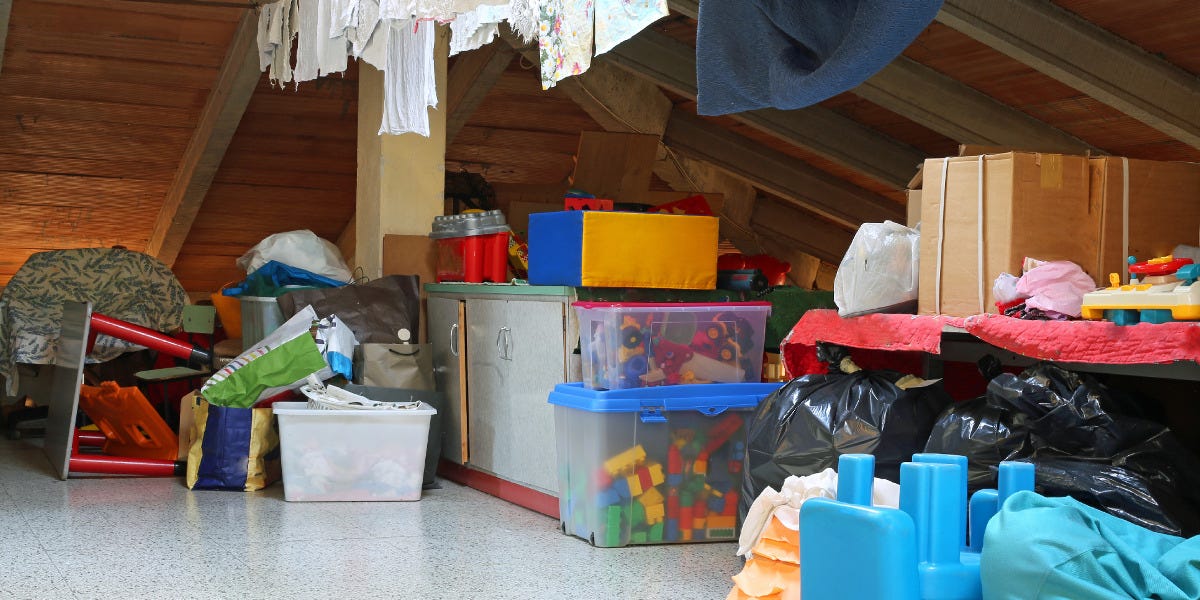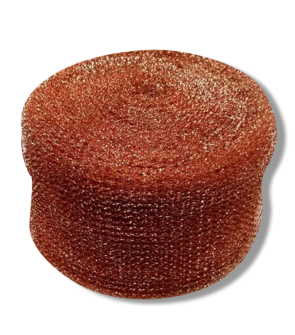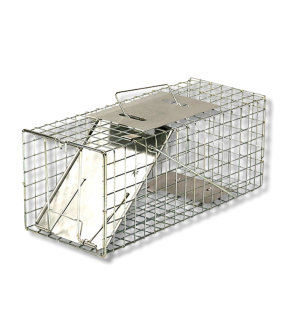Wildlife in Attic
Most Effective Products
Common Wildlife in Attics
Hearing scratching, thumping, scurrying or other noises coming from your attic? These noises are most likely coming from bats, opossums, raccoons, or squirrels, which are common attic invaders.
Since these spaces are warm, dark, and secluded makes them enticing for wild animals. Particular, during the winter months these pests will seek refuge in attics, where they can reproduce and live.
Anytime wildlife enters your home’s attic you are exposed to a series of health hazards and significant property damages. Once inside, you will need to quickly take on several practices suggested in our DIY guide to control these pests.
While following these guidelines, local and state laws are still present and must be followed. It is recommended for the homeowner to visit their local animal control office or state website to visit proper rules and regulations associated with the control of wildlife.
If you are not seeing a pest listed here then contact our customer service team by phone, email, or in-person at one of our store locations for professional recommendations.
Bats
Bats are beneficial creatures that help to lower insect populations, but it is the last thing you want to see in your attic. These flying mammals droppings, also called guano, can result in respiratory complications in homeowners. They also have the potential to carry rabies.
Identification
Depending on the species, bats come in a variety of colors from black, brown, red, tan, or gray. They are mostly known for their wide, hairless wings and mouse-like body structure.
Inspection
 Follow the strong odors as this is where bats are most likely hiding in attics. They can also be found crevices, holes, rafters, and other elevated spaces in attic spaces.
Follow the strong odors as this is where bats are most likely hiding in attics. They can also be found crevices, holes, rafters, and other elevated spaces in attic spaces.
Treatment
Step 1: Seal Up Holes
 Bats can find their way into your attic through holes, cracks, and openings on the outside of your home. These holes must be large enough for them to pass through.
Bats can find their way into your attic through holes, cracks, and openings on the outside of your home. These holes must be large enough for them to pass through.
Patch up any openings with caulk or other holes on the outside of your home with a proper sealant.
Step 2: Spray Supreme IT outside
 Eliminate food sources for bats by spraying a residual insecticide around the outside perimeter of your home.
Eliminate food sources for bats by spraying a residual insecticide around the outside perimeter of your home.
Supreme IT is a broad-spectrum insecticide that eliminates and repels over 70 types of insects, which bats like to eat. It also has a long residual effect that continues to kill for up to 90 days after application.
To mix and apply, you will need a handheld pump sprayer.
Use 1 fl. oz. of Supreme IT in 1 gallon of water per 1,000 sq. ft.
Create a perimeter treatment of Supreme IT by spraying 3 feet up the wall and 3 feet out on the ground next to the foundation. Also, spray around doors and windows, plumbing penetrations, and other points of entry.
Opossums
While opossums are not nearly as aggressive as other wildlife, they do carry several risks with them. One of them being a large amount of harmful diseases and parasites such as fleas and ticks.
They also leave behind droppings, which pose health risks to homeowners and their pets. Additionally, opossums can perish in walls and the smell of rotting flesh is something no one wants to encounter.
Identification
Opossums are medium sized pests that are easily identified by their gray and white fur, long snout, long scaly tail, and ability to play dead or sit still with their mouth open.
Inspection
 Opossums like to stay in the corners and crevices of attics.
Opossums like to stay in the corners and crevices of attics.
Treatment
Step 1: Eliminate Food and Habitat

To increase the effectiveness of your traps and deter possums from entering your attic then remove food sources.
Keep trash in a sealable container with a tight-fitted lid. Gather fruit, vegetable, and nuts from foliage in a timely manner. Rake or pick up fallen plant debris and other vegetation.
Avoid cluttered attic spaces by removing paper stacks, excessive objects, and moving objects away from corners and walls. Place belongings in a plastic sealable container to deter opossum nesting sites.
Step 2: Bait and Set the Trap
Control opossums in attics by setting out a humane control live trap such as the Solutions Humane Live Animal Trap.
The Solutions Humane Live Animal Trap is a safe box-like trap that traps various animals including opossums both indoors and outdoors. The large model would be recommended to contain opossums.
Place this trap on a level surface, which in attics could be along walls, behind storage containers, and corners of rooms.
Outside, place this trap in shrubbery, under patios or decks, along the foundation of your wall, and other areas where this animal has been noticed.
Opossums prefer sweet foods such as honey buns. Place your bait towards the back of the trap to encourage this animal to enter.
Raccoon
Raccoons are notorious for their aggressive behavior, and even more so when cornered or startled by your presence in attics. Once they gain entry into these spaces, they can cause significant damages to the roof and insulation.
They are normally solitary in attics, but can attract other raccoons with their defecation activities. These animals create waste in piles called latrines, which all raccoons in the area will use.
Identification

Racoons have a thick fur coat that is colored a gray to brown color. Their most distinguishing trait is their black mask around their eyes and white and black striped tails. Generally they are 12 inches tall and 24 to 38 inches long.
Inspection
In attics, raccoons can be found in the vents, insulations, wall voids, ceiling rafters, storage containers, furniture, and other voids that are at least 4 inches.
Treatment
Step 1: Secure Food and Declutter

There should be no shrubbery touching the home's foundation or overhanging roofs. Prune overgrown branches, leaves, and stems.
Remove fruit and vegetables hanging off foliage or on the ground. All other food sources like trash cans should be properly sealed with a tight-fitted lid.
Be sure that attics are cleared of unnecessary clutter and pull objects away from the attic walls. Cardboard boxes should be replaced with plastic containers with lids so raccoons cannot use the material to create their nests.
Step 2: Set Humane Trap
Putting humane traps like the Solutions Humane Live Animal in your attic and along your foundation can safely remove raccoons.
To contain and trap raccoons with Solutions Humane Live Animal, you will need a large size.
To set the Solutions Humane Live Animal, push on the door lock while lifting the door plate. Keep the door plate lifted while pulling the trigger arm forward to set it. You will know it is set when the trigger arm's hook catches the door.
We recommend using sweet baits like marshmallows to trap raccoons.
Keep these traps along attic walls, corners, behind furniture and storage containers inside of your attic.
Outdoors, place this product on a flat surface not directly exposed to the sun such as along your home's foundation and other areas where you noticed their activity.
Squirrels
While squirrels may appear cute, these rodents shouldn’t be taken lightly when inside attics. After they come into these areas, they will gnaw on electrical wiring, destroy insulation, and build nests in walls out of various materials that could easily catch fire.
Identification

Inspection
Squirrels can be found in the insulation, voids, wall interior, storage boxes, furniture, eaves, vents, roof, and other open spaces in the attic.
Treatment
Step 1: Seal Entry Points
To start, determine where squirrels are entering your attic. Look around the outside of your home as well.
By sealing their access points you can prevent and stop more squirrels from entering your attic.
We recommend using caulk and copper mesh such as Stuf-Fit Copper Mesh. This product is a flexible woven material that deters animals from entering structures since the material is difficult to gnaw through.
After that, ensure all vents and windows in your attic have proper screening with no visible damages. Any gaps around windows will need to be addressed.
Step 2: Capture Squirrel
After that, you have a few options for squirrel removal in your attic. The one we recommend the most is humane trapping with our Solutions Humane Live Animal Trap.
This will help to safely capture the pest and avoid dead rodents in the wall. Use the small size of this trap to capture squirrels.
Be sure to place the Solutions Humane Live Animal Trap on a flat, even surface in areas where you have noticed squirrel activity.
After setting the humane trap, place peanut butter laced with nuts and seeds on the trigger plate or behind it to lure squirrels into the trap.
To avoid squirrels moving the cage, you may need to set a brick or heavy object on top of the trap.
You will then set your trap by pushing on the door lock and lifting the door plate. Keep the door plate lifted while pulling the trigger arm forward to set it. You will know it is set when the trigger arm's hook catches the door.
Key Takeaways
Why Do Animals Get Inside Attics
- Animals move into attics for the safety from weather elements, animals, and their young. Making a home in a warm, dry location close to food and water also plays a factor.
How Do Animals Get Into Attics
- Some of the ways animals get into attics are broken window screens, unscreened attic vent, holes or cracks on roof or exterior perimeter of attic, voids where chimneys meet the wall, or warped and damaged house siding.
Which Animals Come Into Attics
- Common animals to enter attics are bats, raccoons, opossums, and squirrels.




















































































































































































































































































































































































































































































































































